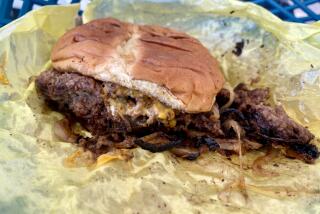A (Tuna) Fish Story
If you’re watching your weight and eating canned tuna, you might be interested in this fact: All tuna is not created equal. Some varieties are fattier than others.
In other words, you could buy a can of “premium albacore” solid white tuna packed in spring water one week with a label that describes the fat content as 1 gram per 2-ounce serving, only to find the same tuna the next week with a slightly different nutritional label, this one with 4 grams of fat per 2-ounce serving. What’s going on? Are you seeing things? Is the tuna company playing tricks on you?
No. You just bought a different catch of fish. Albacore tuna (labeled “white,” “white meat” or “solid white” tuna) legally can be only one species of fish, but depending on where the fish was caught, the temperature of the water, the age of the fish and what the fish has been eating, you could be eating a skinny fish or a fat fish. The fat content on a 2-ounce can of albacore might range from 1 gram of fat to 7 grams. That means you could be enjoying either a light snack or a downright fat tuna binge.
Albacore tuna caught closer to the shore of the western United States tends to be fatter and younger. This tuna is said to taste best. Albacore caught after migrating to deeper waters farther out in the Pacific tend to be older and skinnier. On the other hand, tuna caught in colder waters have a thicker fat layer for protection.
The lesson: Always check your tuna labels. Think of it as beef. You can’t assume that all hamburgers have the same fat content. You can tell only by looking at the marbling or reading the label on the package. Because you can’t see tuna in the can, you have to rely on the label.
One way to avoid the giant fat fluctuations is to buy light tuna. Tuna labeled “chunk light” or “light meat” can be any one of 14 species of tuna--but not albacore. The most common forms of light canned tuna are the yellowfin, skipjack, bluefin or bigeye tuna. These fish usually contain about 0.5 gram of fat per 2-ounce serving.
Sometimes a seafood company lucks out and buys a particularly low-fat catch. Labeled “low-fat” or “special catch,” this tuna can contain less than 0.5 gram of fat per serving, earning the coveted “0 grams of fat” rating on the label.
What’s the moral here? If you’re going for taste, go for the fat. If you’re dieting, watch your labels.
More to Read
Eat your way across L.A.
Get our weekly Tasting Notes newsletter for reviews, news and more.
You may occasionally receive promotional content from the Los Angeles Times.






